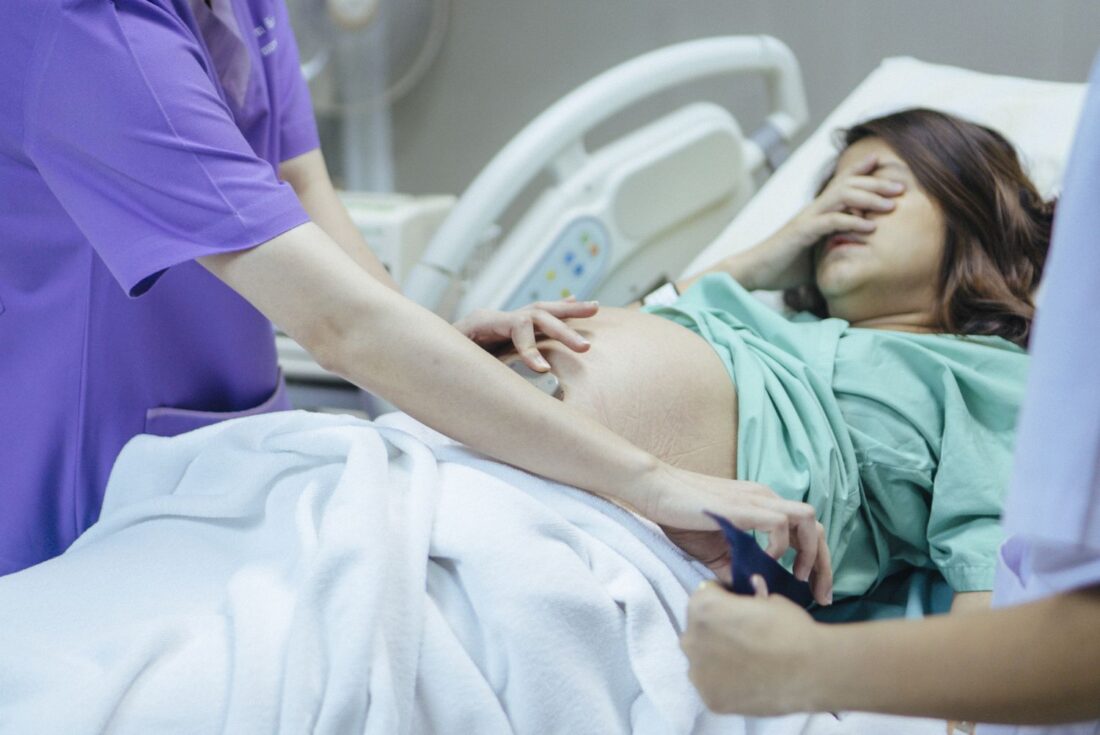Every once in a while, something might happen during childbirth that can cause complications. For instance, you might have an umbilical cord prolapse situation. If that happens, it can seriously injure the baby during the birth process. In rarer cases, it endangers their life.

Parents should know about factors leading to umbilical cord prolapse. We will talk about some of those in the following article.
What Does Umbilical Cord Prolapse Mean?
If you hear the term “umbilical cord prolapse,” it means a situation where the umbilical cord that the mother uses to feed the child in utero descends through the cervix. When it happens, the cord descends either past or alongside the part of the baby that is descending.
It does not happen often, but when it does, the doctor, nurse, or another medical professional nearby must immediately spring into action, assuming they know what to do. Doctors who deliver babies, and also midwives and other medical professionals, normally receive training. They take refresher courses on this too, so that if it ever happens, they should not freeze up during the crucial moment.
When Does It Happen?
This sometimes happens during labor. It is at that point that the umbilical cord presents itself, even as the child itself does.
However, it can also occur when the water breaks but before labor actually starts. That is why, if a mother’s water breaks, she needs to try to get to a hospital as quickly as she can.
Of course, some mothers prefer to have their baby at home or in another locale that they pick out beforehand. That usually works out fine. In situations where complications present themselves like this one, the mother must sometimes adjust her plans and get to a hospital to potentially save her life or the infant’s.
How Often Does It Happen?
This situation does not happen all that often. The latest stats put it at about once in every 200-1,000 births. That number fluctuates slightly year by year, but it remains pretty steady.
When it happens, it is usually right around the end of the 37th week of pregnancy. If the baby comes out in a breach position, meaning it’s coming out feet or bottom first, that presents more of a life risk than if the baby comes out the regular way, headfirst.
Why It’s So Dangerous
During contractions, there’s an intense period where the mother tries to expel the baby through gentle force. When the baby’s close to birth, that pressure intensifies.
It’s a natural process, and normally, both mother and baby survive it fine. However, with umbilical cord prolapse, the baby or womb can squeeze the cord during a contraction. If that happens, it can reduce the infant’s oxygen supply a great deal, or even cut it off entirely in extreme circumstances.
How You Treat It
If the doctor, nurse, or another medical professional on the scene realizes that’s what’s happening, they can try to expedite the delivery. That’s the outcome that yields the most positive results.
They should make an effort to relieve cord compression until the mother can successfully deliver the baby. Even though this sounds like a dire situation, though, the number of times this happens seems to be decreasing in the modern era.
Medical professionals mostly point to increased ultrasound use during the third trimester. An ultrasound can often identify if this condition could happen. Then, a doctor or hospital can take steps beforehand to prevent or alleviate the situation as soon as the mother’s water breaks.
You might ask why a medical professional like a doctor would not try to take action to prevent umbilical cord prolapse before the birth begins if the ultrasound can predict it. It is because there’s little they can do before the birthing process starts.
Doctors, even though they know more about the birthing process now than probably at any other time in history, still don’t have a recommendation of any action or inaction the mother might take that can prevent this condition. No definitive risk factors tie the mother’s likelihood to UCP.
The Baby’s Survival Rate
If a baby goes through this during birth, they will often survive. Only about 3% of infants die from this condition if the mother has medical professionals surrounding them in a hospital setting when it occurs.
If a mother tries to have the child in a setting with a less well-trained individual helping her, the baby’s survival chances go down. That is why, even if a mother-to-be wants an at-home birth, the practicality sometimes makes that unadvisable.
What Happens if a Child Dies from Umbilical Cord Prolapse?
If a child dies from an umbilical cord prolapse, that is obviously tragic. If the doctor or medical professionals on hand did all they could to prevent it, though, then there is little the mother and family can do other than mourning the child.
If the mother or family feels that the doctor or some other medical professional on hand did not take the appropriate action, though, they could always bring a medical malpractice lawsuit against the doctor, nurse, orderly, or hospital. If that happens, the case can quickly get quite contentious, especially if the doctor or medical facility feels they did everything right.
If such a lawsuit ever happens, the doctor or hospital might settle. These kinds of personal injury lawsuits seldom actually see the inside of a courtroom.
Rarely, though, you might have a situation where the doctor or hospital will not admit any wrongdoing. If that happens, then the lawsuit might drag its way through the court system and get to a jury’s verdict.
In these rare cases, the woman who lost the child and her lawyer must prove that the doctor or hospital did not adhere to the standard of care that the pregnant woman should have expected. That presents distinct challenges, though. The lawyer might have to call in expert witnesses to attempt to prove their case.


